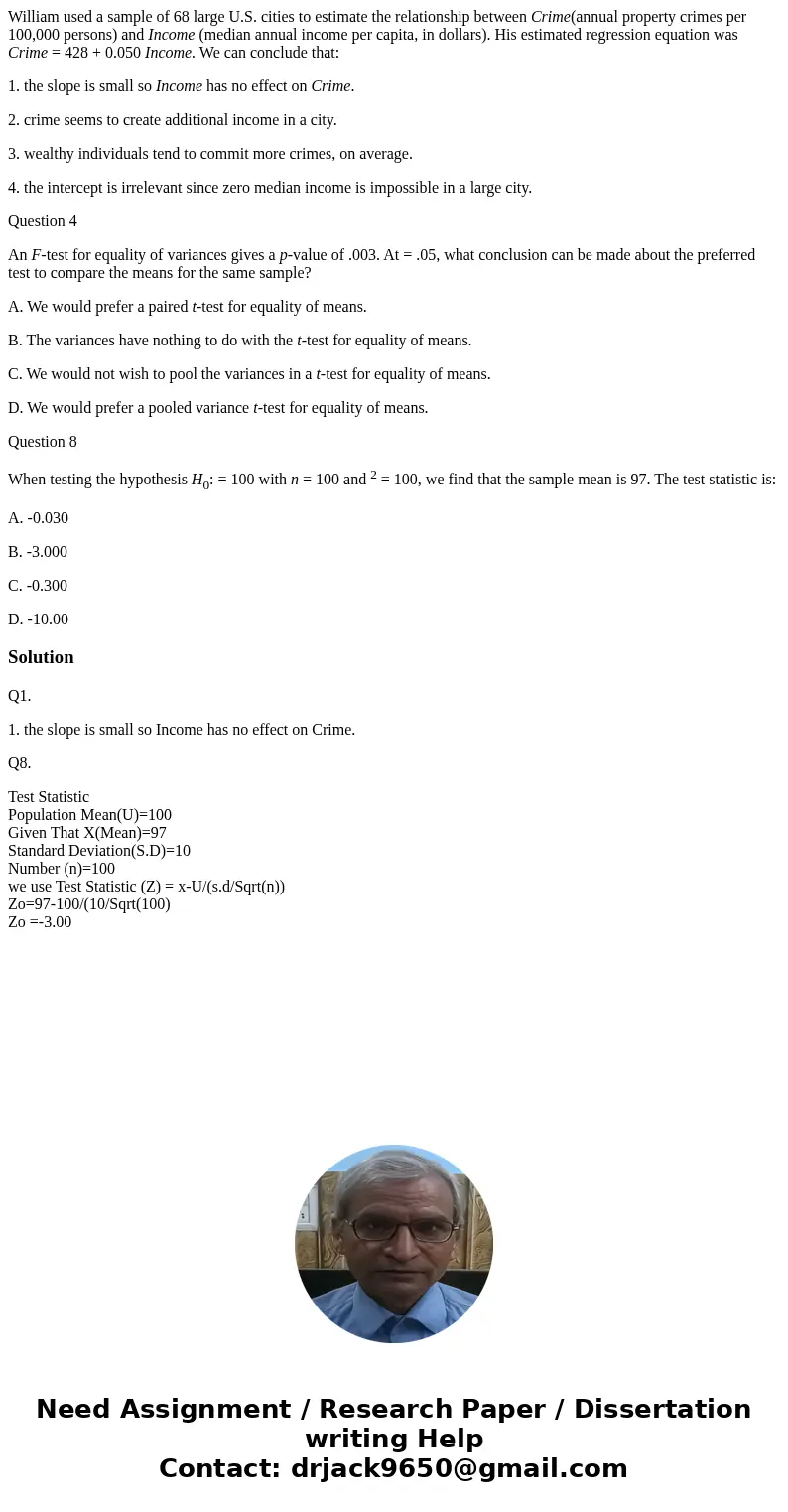William used a sample of 68 large US cities to estimate the
William used a sample of 68 large U.S. cities to estimate the relationship between Crime(annual property crimes per 100,000 persons) and Income (median annual income per capita, in dollars). His estimated regression equation was Crime = 428 + 0.050 Income. We can conclude that:
1. the slope is small so Income has no effect on Crime.
2. crime seems to create additional income in a city.
3. wealthy individuals tend to commit more crimes, on average.
4. the intercept is irrelevant since zero median income is impossible in a large city.
Question 4
An F-test for equality of variances gives a p-value of .003. At = .05, what conclusion can be made about the preferred test to compare the means for the same sample?
A. We would prefer a paired t-test for equality of means.
B. The variances have nothing to do with the t-test for equality of means.
C. We would not wish to pool the variances in a t-test for equality of means.
D. We would prefer a pooled variance t-test for equality of means.
Question 8
When testing the hypothesis H0: = 100 with n = 100 and 2 = 100, we find that the sample mean is 97. The test statistic is:
A. -0.030
B. -3.000
C. -0.300
D. -10.00
Solution
Q1.
1. the slope is small so Income has no effect on Crime.
Q8.
Test Statistic
Population Mean(U)=100
Given That X(Mean)=97
Standard Deviation(S.D)=10
Number (n)=100
we use Test Statistic (Z) = x-U/(s.d/Sqrt(n))
Zo=97-100/(10/Sqrt(100)
Zo =-3.00

 Homework Sourse
Homework Sourse